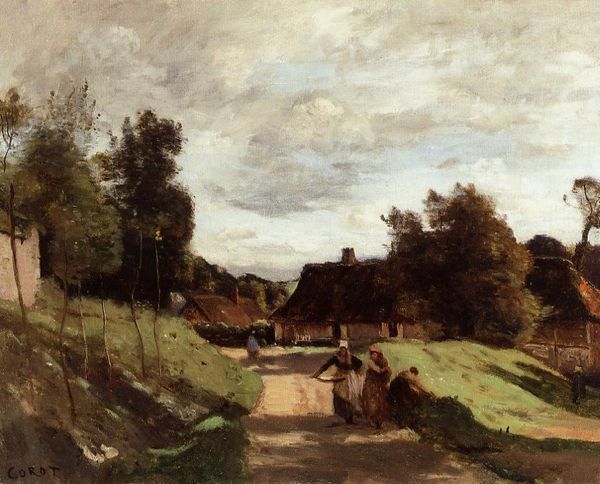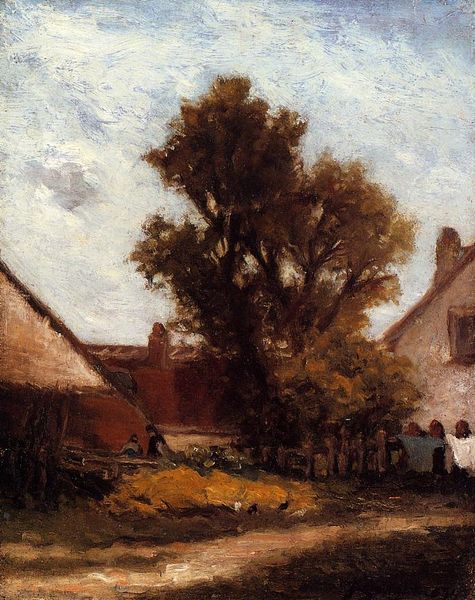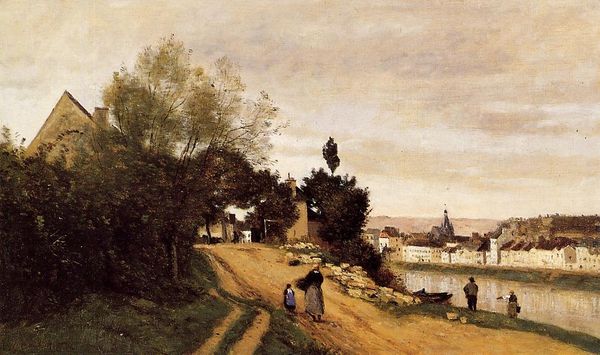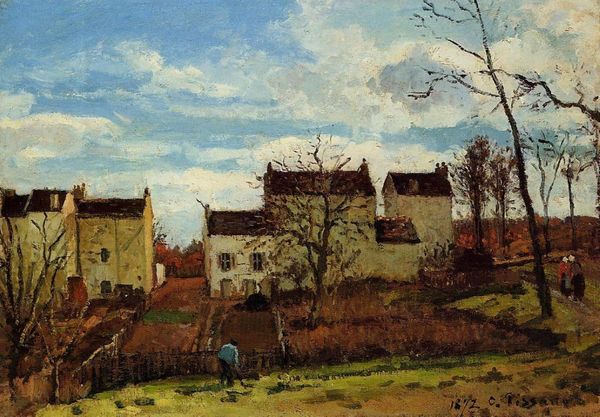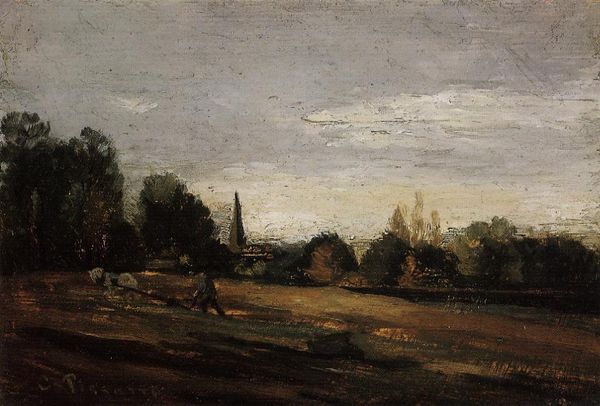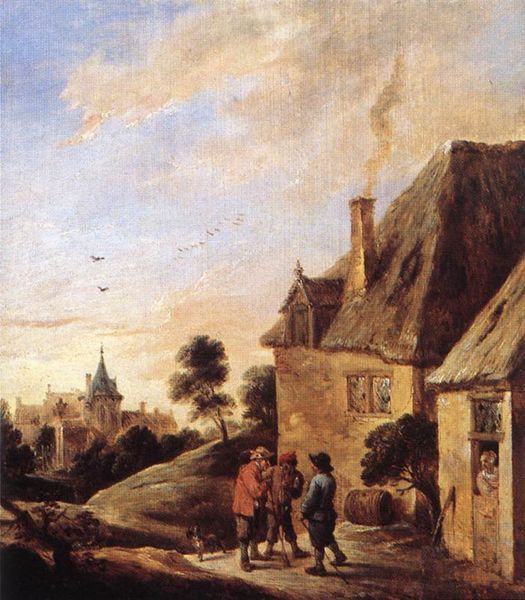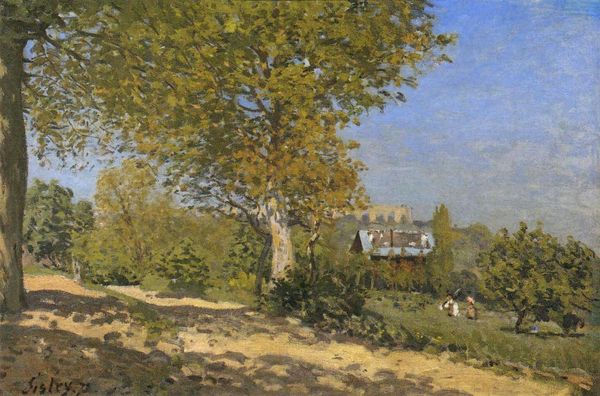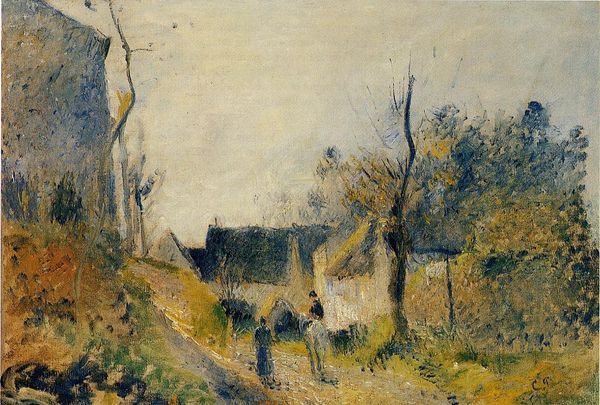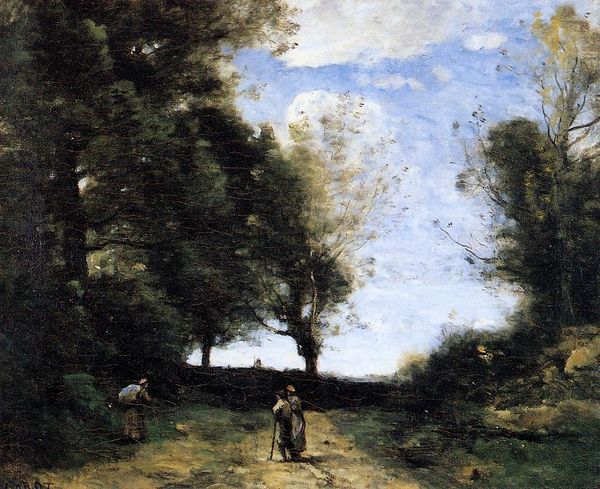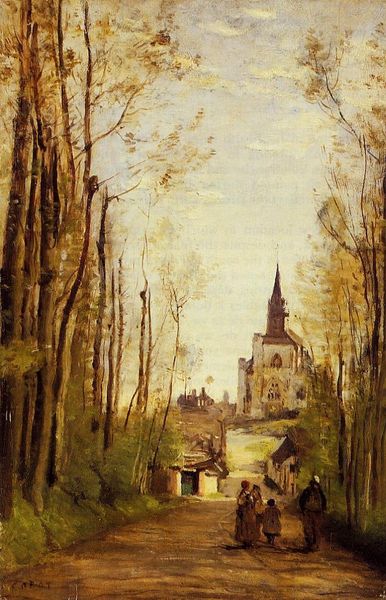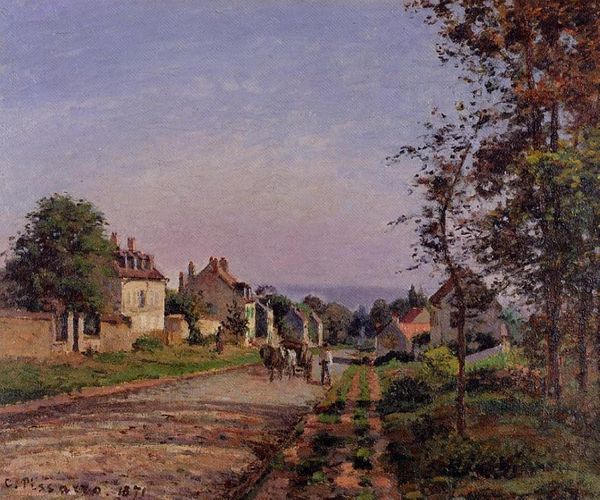
A Road Near Arras (Cottages) 1858
0:00
0:00
jeanbaptistecamillecorot
Musée des Beaux Arts d'Arras, Arras, France
Dimensions: 35 x 46 cm
Copyright: Public domain
Curator: Here we have Camille Corot’s “A Road Near Arras (Cottages),” painted in 1858. What are your initial thoughts? Editor: There’s an overwhelming sense of peace, and also a slightly melancholic feeling, despite the pleasant pastoral scene. The muted color palette definitely contributes. Curator: Indeed. Note how the composition employs a delicate balance between the cottages and the towering trees. Corot's ability to convey depth is remarkable. The loose brushwork gives it an almost dreamlike quality, dissolving the concrete into planes of light and shadow. Editor: Yes, it also points to the lives of peasants, the subjects that Realism and artists like Courbet promoted as worthy, rather than just grand historical narratives. Consider the backbreaking labor involved in that environment for women and rural workers. The tranquility feels almost subversive when placed against their historical exploitation. Curator: I concede that Corot was breaking from the established academic traditions of his time by prioritizing direct observation and the effects of light. His atmospheric perspective flattens the planes, creating this subtle depth we spoke of. I agree, there is a certain revolutionary quality in capturing the mundane. Editor: Revolutionary because representing rural life in art gave visibility and dignity to a population usually absent from grand historical narratives, and even from the canvas itself. Also, I'd like to emphasize that painting “en plein air” allowed for an immediacy and raw sensory engagement with the landscape, connecting artist, environment, and the inhabitants even more. Curator: An astute observation. The immediacy he achieves indeed resonates deeply within the final composition. Editor: It makes me contemplate how art serves not just as an aesthetic exercise, but as an important historical witness. Curator: I would agree that art should be regarded as both form and historical object. Viewing through both of our perspectives offers great nuance in appreciation. Editor: Exactly, and keeps us aware that Corot’s tranquil road also leads back to history.
Comments
No comments
Be the first to comment and join the conversation on the ultimate creative platform.
